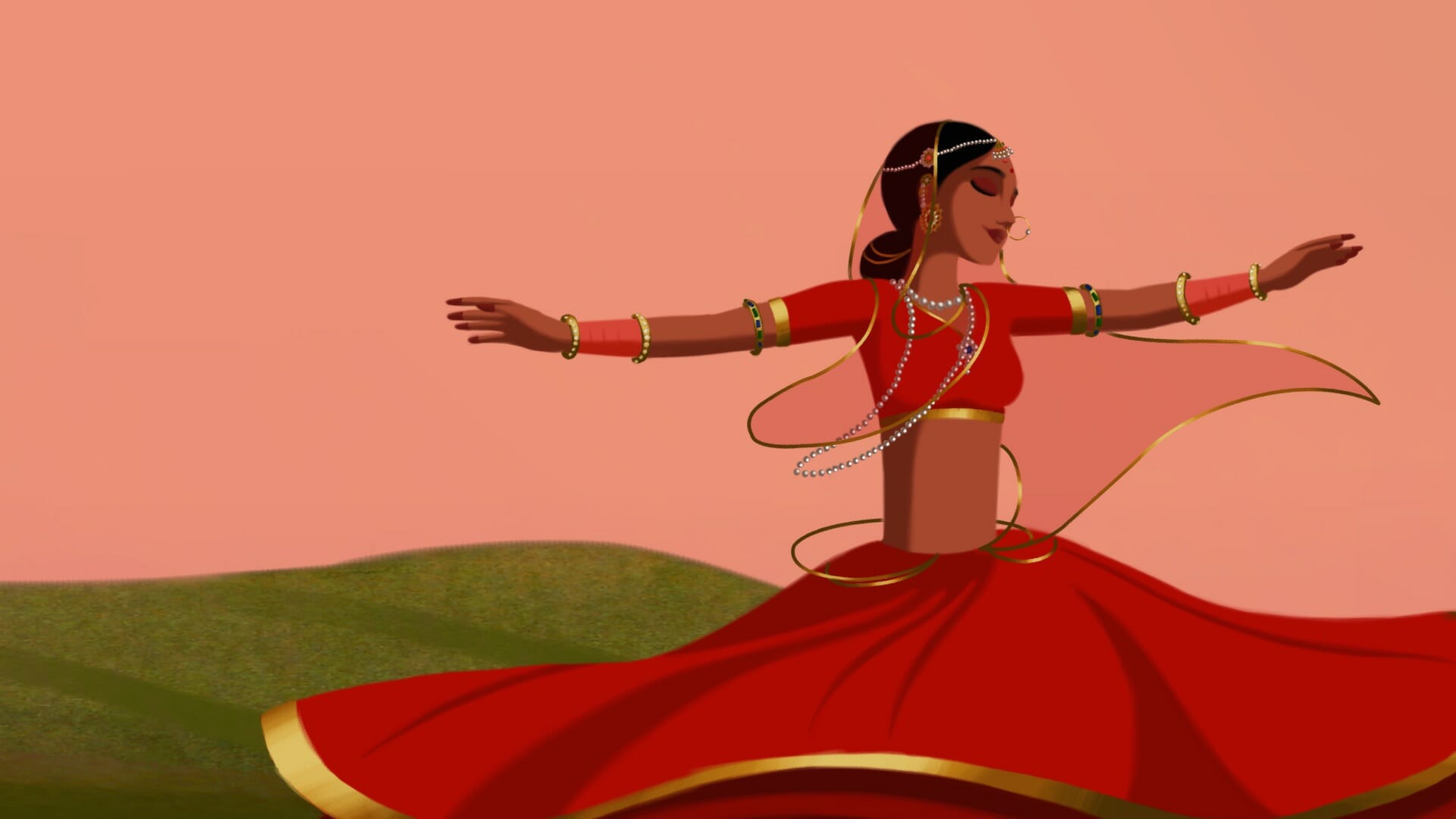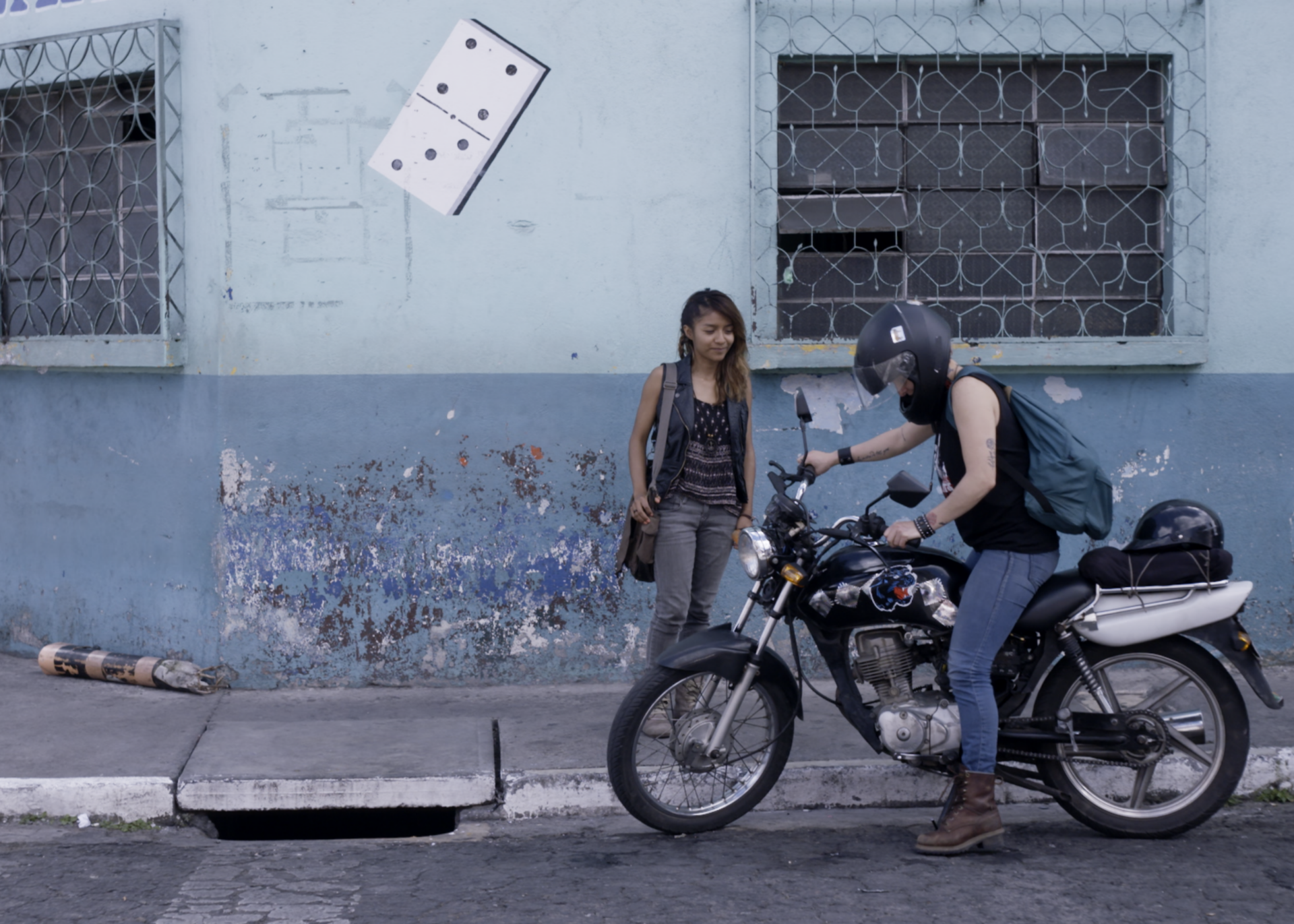
Bombay Rose has a unique visual animation style
Year
Runtime
Director
Production Designer
Music by
Country
Format
Genre
Subgenre
By
Against a white canvas, brushstrokes begin to appear. At first, they are nothing but swatches of brown and black, then blocks of color, then suddenly they are a wall of ramshackle houses, a busy street, a flock of crows, a Bollywood poster: Mumbai. It is the city of silver screen melodramas, where impossible romances become possible. A beautiful girl is saved at the last minute by a handsome hero, who offers her a rose and a kiss. Then the film cuts, and it is back to real life in the slums. For Bombay Rose protagonist Kamala, that means selling garlands during the day and dancing at a bar at night. Meanwhile, she plans to wed herself off as a bride in Dubai as soon as her documents come through. For Salim, a Kashmiri refugee, it means stealing roses off of gravestones to sell at the beach, trying desperately to secure a job. They find moments of escape through their daydreams, and when they meet, those daydreams start to include each other.
The visual style
In Bombay Rose Gitanjali Rao expands the story of these two unfortunate lovers from her 2014 short film TrueLoveStory. She employs the same frame-by-frame painted animation style as she has used since her 2006 Printed Rainbow. With a team of 60 artists, she brings to life a jewel-toned Mumbai packed with busy traffic and interconnected lives. There, daily survival is a struggle but where a miraculous Bollywood ending always feels just around the corner.
Yet, when these fantasies “begin to influence and replace reality,” says Rao, “you lose the balance.”
The director’s unique animation style, formed under the mentorship of compatriot Ram Mohan and the Polish Jerzy Kucia, allows her to dissolve seamlessly from reality into dreams. Also, she alters her style according to the dreamer. Mughal miniatures inspire Kamala’s reveries; Salim’s ones have a truck art style and those of an old ex-star are in Gothic black and white.
Touching upon contemporary events
With her first feature-length film, Rao subverts the mythmaking of Bollywood cinema without surrendering to bleak cynicism. Gravitating towards a soft social realism, she touches on contemporary topics. For instance, she describes Mumbai’s slum population, the Kashmir insurgency, child marriage, and human trafficking. However, the film keeps the narrative grounded in the small predicaments of her protagonists. Perhaps there’s no Bollywood ending, but the connections between the characters seem like miracles in their own right.
Tag
Buy a ☕ for Hypercritic









